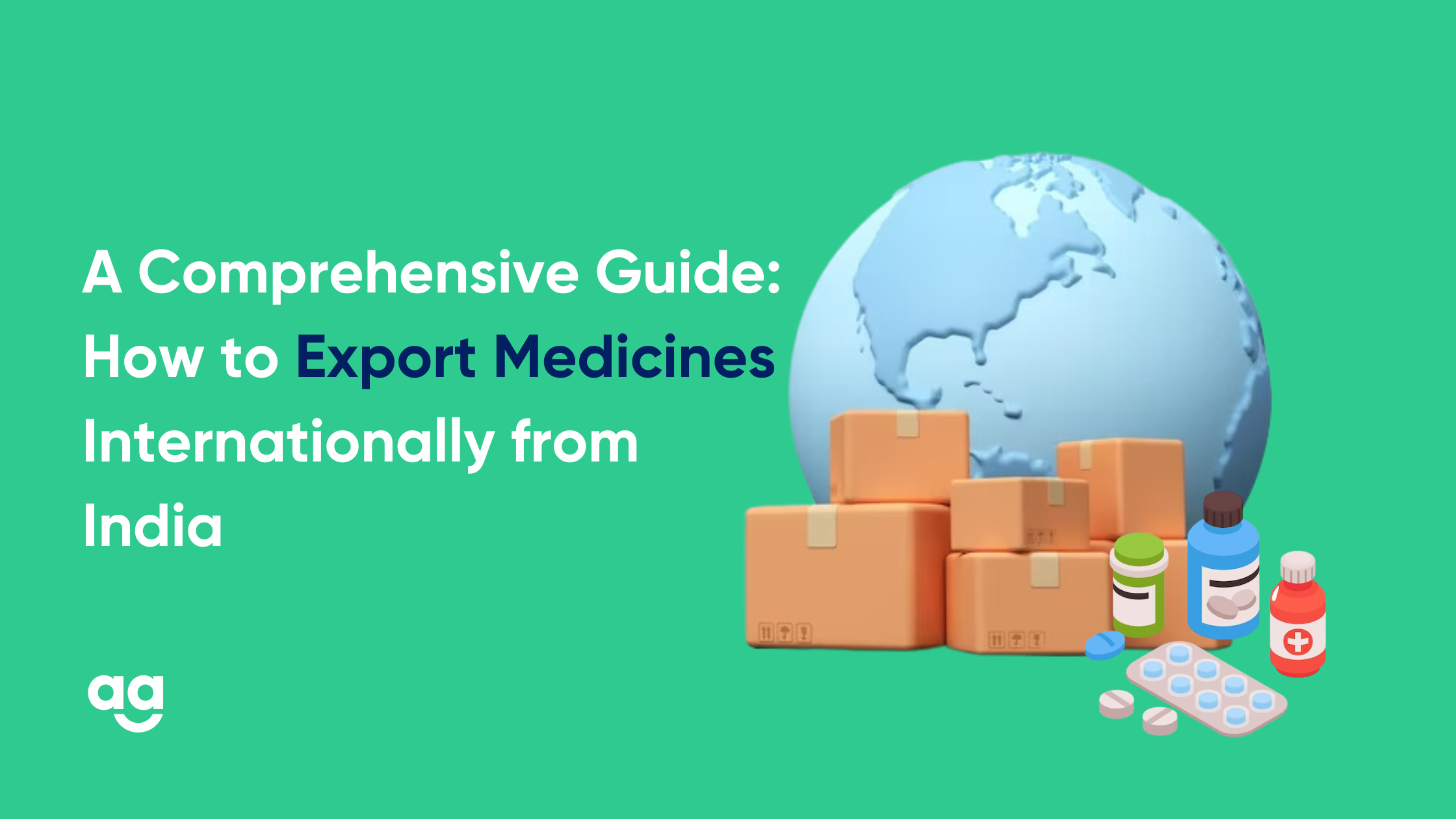Introduction
Exporting medicines internationally from India can be a complex process, involving various regulations and requirements. However, with the right knowledge and guidance, it is possible to navigate through the intricacies and tap into the global market.
In this blog post, we will provide a step-by-step guide on how to export medicines internationally from India, ensuring compliance and maximizing your chances of success.
Steps to Export Medicines Internationally from India
Step 1: Understanding the Legal Framework
Exporting medicines from India requires compliance with various legal and regulatory frameworks. The first step is to obtain an Import-Export Code (IEC) from the Directorate General of Foreign Trade (DGFT).
Additionally, it is crucial to familiarize yourself with the guidelines provided by the Central Drugs Standard Control Organization (CDSCO) and the Pharmaceutical Export Promotion Council of India (Pharmexcil).
Step 2: Meeting Regulatory Requirements
To export medicines internationally, you need to fulfill certain regulatory requirements. This includes obtaining the necessary licenses, such as a Wholesale Drug License, Manufacturing License, or Loan License, depending on your business model.
It is essential to ensure that your manufacturing facility complies with Good Manufacturing Practices (GMP) and that the products meet the standards set by regulatory bodies like the World Health Organization (WHO).
Step 3: Quality Control and Documentation
Maintaining quality control is crucial to building a strong reputation in the international market. Implementing a robust quality management system, conducting regular inspections, and obtaining necessary certifications, such as ISO 9001, will help establish your credibility.
Keep detailed records of batch manufacturing and testing results, including product specifications, stability data, and certificates of analysis.
Step 4: Packaging and Labeling Considerations
Proper packaging and labeling play a vital role in ensuring that your exported medicines meet international standards. Adhere to the guidelines set by regulatory authorities, including the International Organization for Standardization (ISO) and the country-specific regulations of your target market.
Clearly label essential information such as drug name, strength, dosage form, manufacturing date, expiry date, batch number, and storage conditions.
Step 5: Shipping and Logistics
Choosing the right shipping and logistics partner is crucial for a smooth export process. Ensure that your logistics provider is experienced in handling pharmaceutical products and has a robust supply chain network.
Consider factors like temperature control, documentation requirements, customs clearance, and adherence to international shipping regulations, such as the International Air Transport Association (IATA) guidelines for transporting pharmaceuticals.
Step 6: Developing International Marketing Strategies
To successfully export medicines, it is vital to develop effective international marketing strategies. Identify target markets based on demand, regulatory environment, and competition analysis.
Conduct market research to understand local preferences, pricing dynamics, and potential distribution channels. Establish a strong online presence, participate in international trade fairs, and leverage digital marketing tools to promote your products globally.
Step 7: Establishing Distribution Channels
Collaborating with reputable distributors in the target market can greatly enhance your export capabilities. Conduct due diligence and choose distribution partners based on their track record, market reach, and knowledge of local regulations. Develop mutually beneficial agreements and establish clear communication channels to ensure efficient distribution and after-sales support.
India’s Contribution to the World Pharmaceutical Landscape
Here are some relevant statistics highlighting India’s contribution to the world pharmaceutical landscape:
- According to the Indian Brand Equity Foundation (IBEF), the Indian pharmaceutical industry holds a 3.5% share of the global pharmaceutical market in terms of value and a 20% share in terms of volume.
- India’s pharmaceutical products are exported to more than 200 countries worldwide. Key export destinations include the United States, the United Kingdom, Russia, Germany, South Africa, Brazil, and various countries in the Middle East and Southeast Asia.
- India is the largest exporter of generic drugs globally. As per IBEF, India supplies around 62% of global demand for vaccines, 30% of generic medicines in the United States, and 25% of all medicine exports to the United Kingdom.
- India has been instrumental in manufacturing COVID-19 vaccines, including Covishield (AstraZeneca/Oxford vaccine), Covaxin (indigenous vaccine), and providing them to various countries through initiatives like COVAX.
- India’s pharmaceutical industry invests significantly in research and development activities. According to the Department of Pharmaceuticals, Government of India, Indian pharmaceutical companies invested around INR 16,860 crore (approximately USD 2.3 billion) in R&D during the fiscal year 2019-20.
- India is a major global player in Active Pharmaceutical Ingredients (API) production. The country supplies approximately 40% of generic APIs used in the United States and 25% of all global exports in terms of value.
- India has a strong regulatory system that ensures compliance with international standards. The Central Drugs Standard Control Organization (CDSCO) grants approvals for new drug registrations, clinical trials, and manufacturing facilities. In recent years, India has been receiving an increasing number of Abbreviated New Drug Application (ANDA) approvals from the United States Food and Drug Administration (FDA).
These statistics demonstrate India’s substantial presence and contribution to the global pharmaceutical landscape, highlighting its role in supplying affordable medicines, vaccine production, R&D investments, API manufacturing, and adherence to regulatory standards.
Conclusion
India’s contribution to the world pharmaceutical landscape is undeniable and vital. With its robust manufacturing capabilities, cost-effective generic medicines, skilled workforce, regulatory compliance, research and development initiatives, and significant export potential, India plays a crucial role in meeting global healthcare needs. The country’s pharmaceutical industry continues to make strides in innovation, production, and accessibility, benefiting patients and healthcare systems worldwide.
By leveraging the expertise of Shipyaari, pharmaceutical exporters can streamline their shipping processes, ensure compliance with international standards, and focus on expanding their reach in the global market. With the right shipping and logistics partner, exporting medicines internationally becomes a seamless and hassle-free experience.







 Shipping
Shipping







